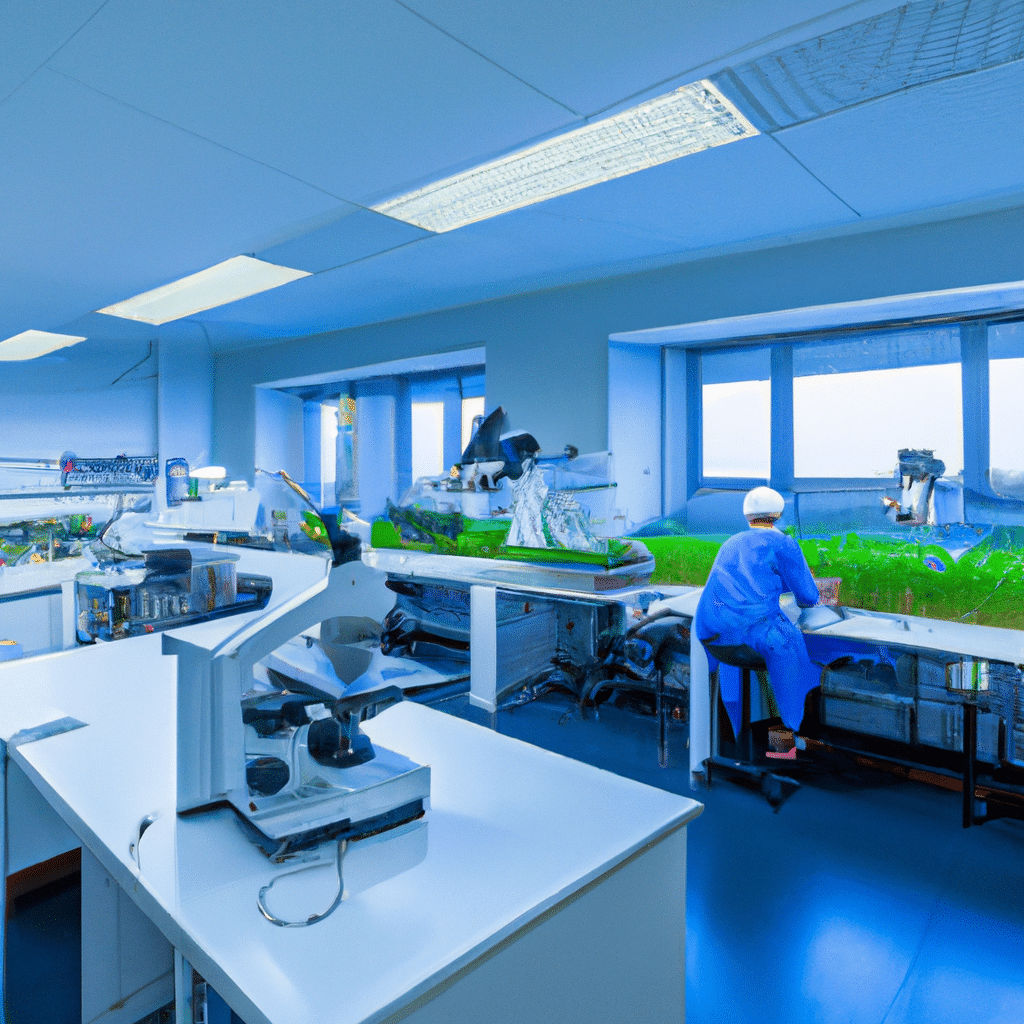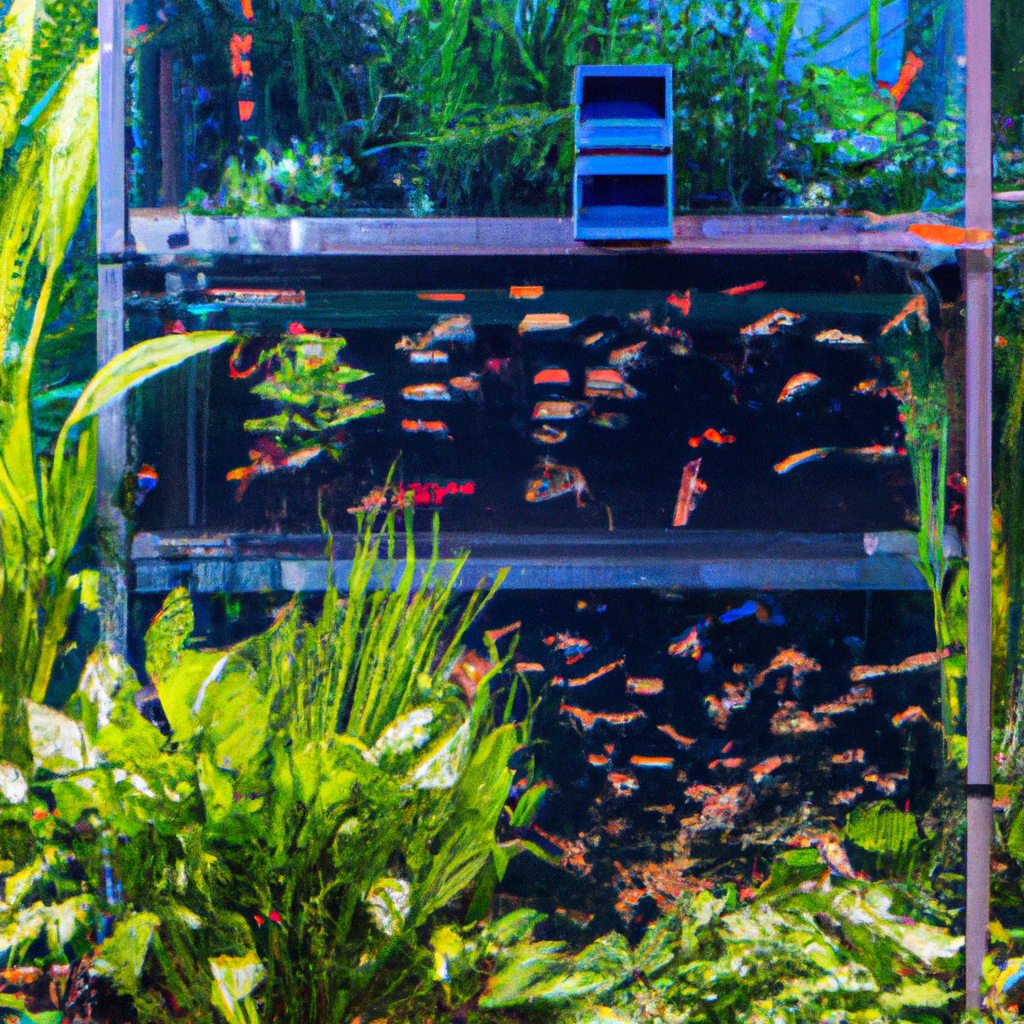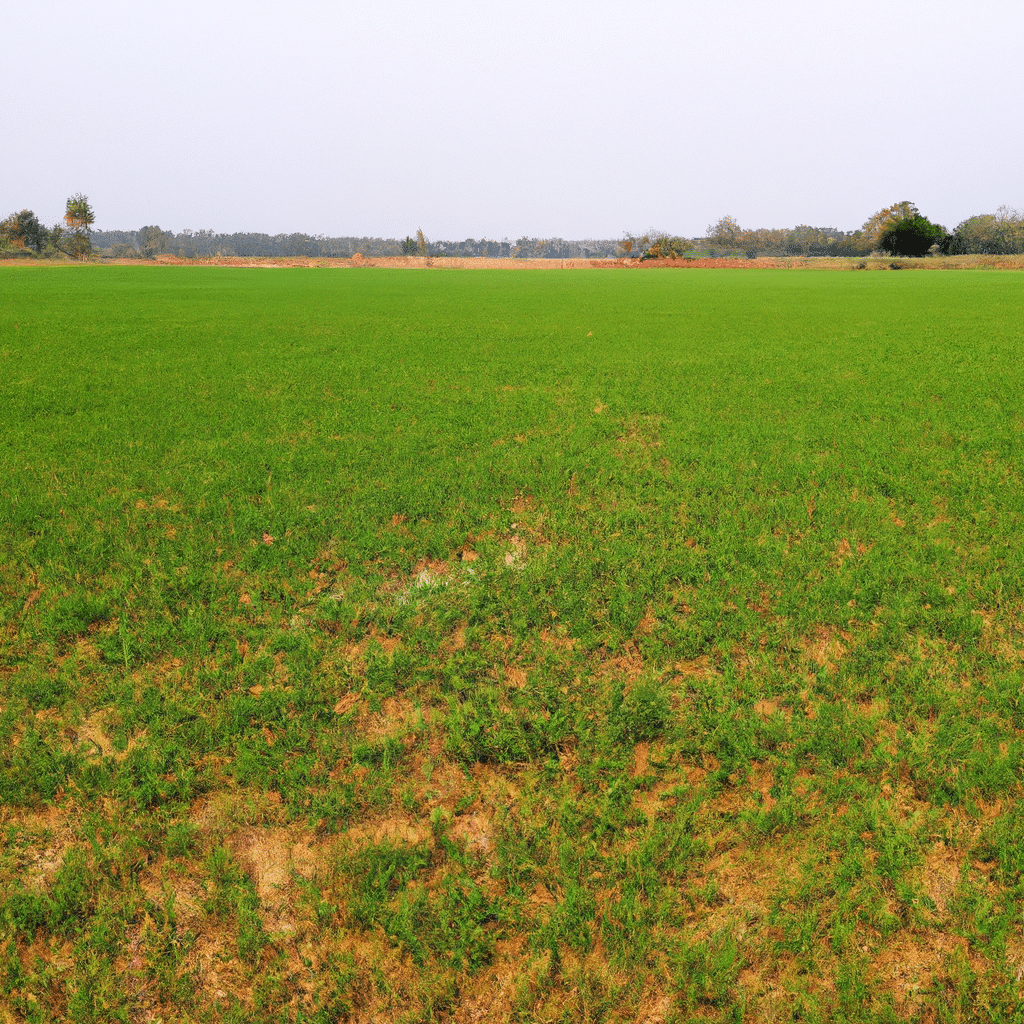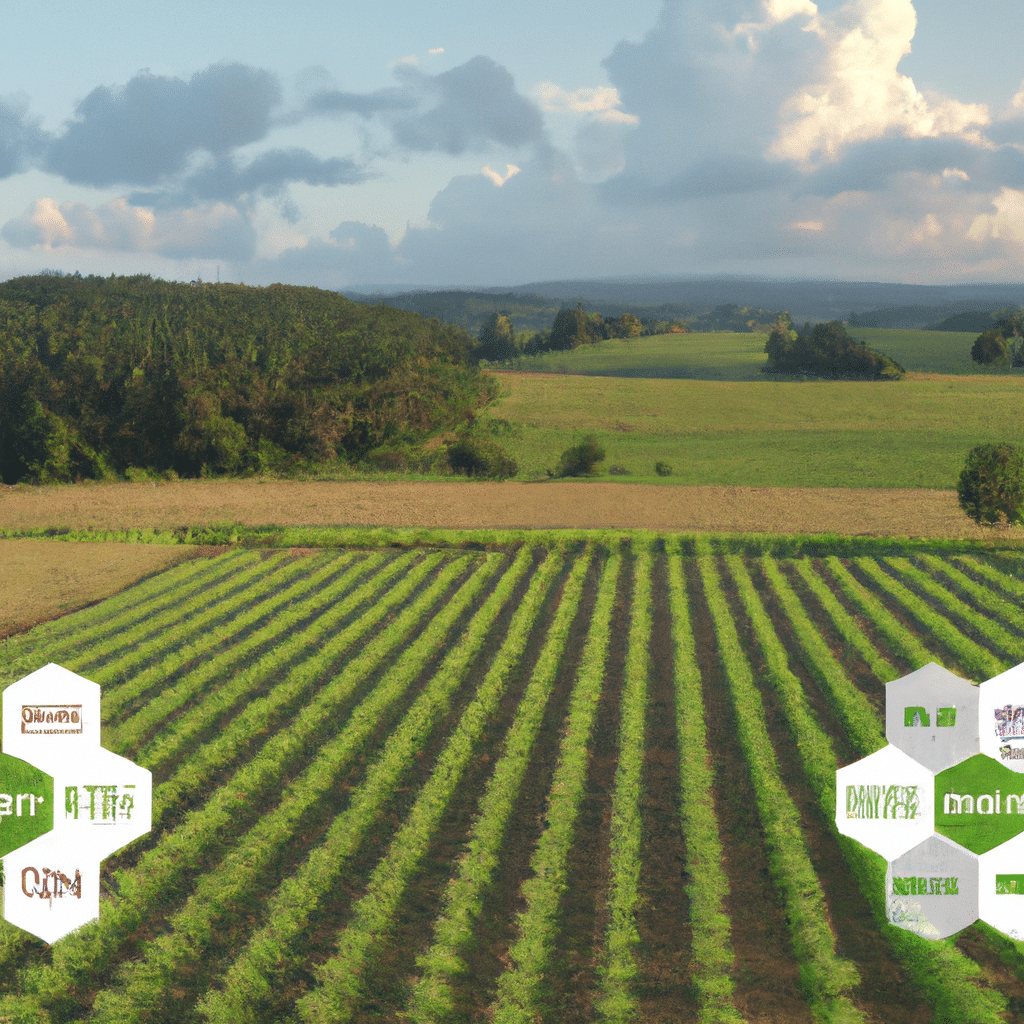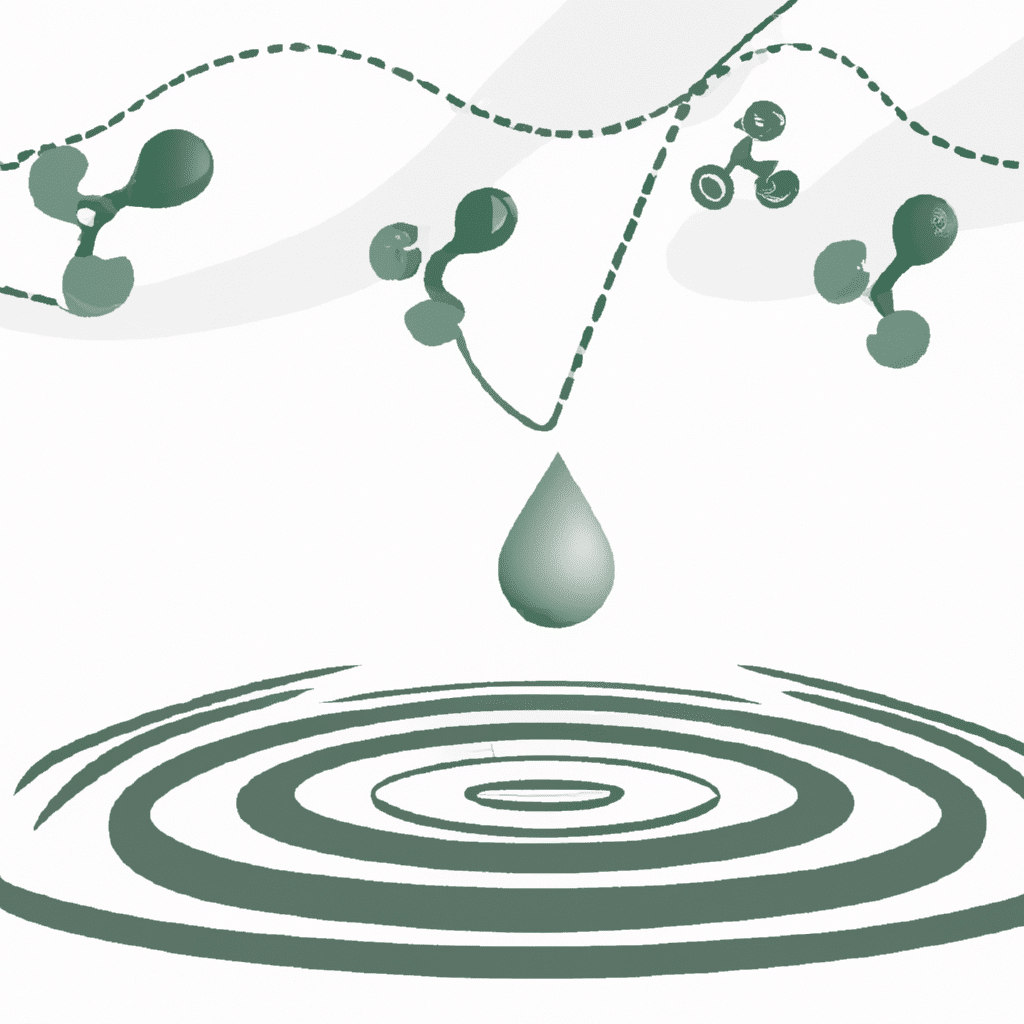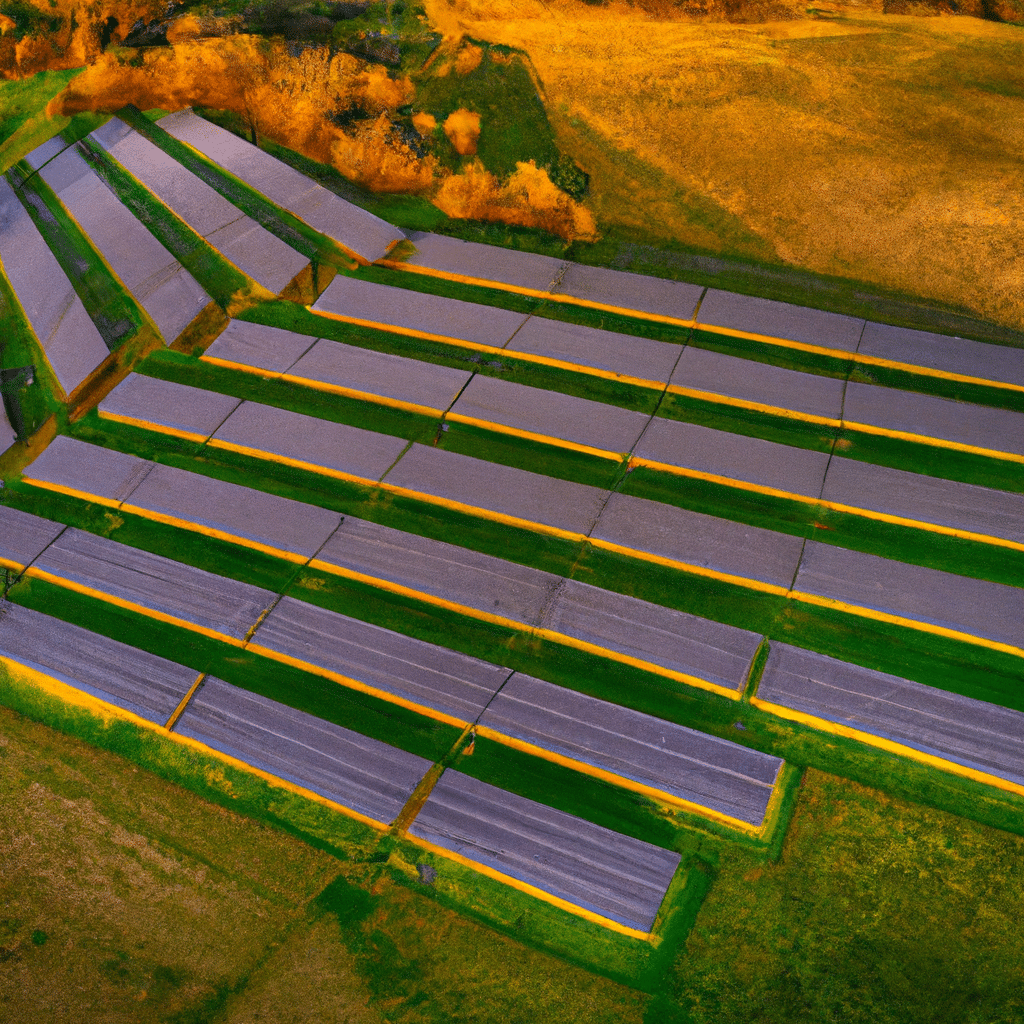The Changing Climate and Agriculture
The global climate is changing rapidly, posing new and complex challenges for agriculture. Rising temperatures, changing rainfall patterns, and more frequent extreme weather events are impacting crop yields and food security worldwide. At the same time, the global population continues to grow, exerting more pressure on agricultural systems to meet food demand.
To adapt and thrive in this changing environment, the adoption of modern technologies and farming tools is no longer an option for farmers – it is a necessity. In particular, innovations in water management are becoming critical to ensure resilient and productive agriculture in the face of climate change.
This article explores the vital role that modern water pumps and irrigation systems play in empowering farmers to adapt to the impacts of climate change. We will analyze the science behind these technologies, real-world case studies, comparative data, and expert perspectives to build a comprehensive understanding of how water pumps enable climate-smart agriculture.
The Historical Relationship: Climate and Farming
Throughout history, agricultural practices have evolved in response to shifts in climate. Early human civilizations emerged and thrived in fertile river valleys and deltas, developing irrigation networks to support crops. Periods of favorable climate enabled the expansion of agriculture and population growth.
However, episodes of drought, flooding, and extreme weather also led to crop failures, famine, and societal collapse. Climate has long been the make-or-break factor for food production.
In modern times, the Industrial Revolution brought mechanization and new tools to farming. However, the core dependency on rainfall and climate remained unchanged. Traditional practices of flood irrigation, rain-fed farming, and manual water lifting persisted around the developing world.
The advent of electric water pumps in the early 20th century signaled the arrival of a technology that could revolutionize agricultural water management, vastly expanding options for reliable irrigation.
Understanding Modern Agricultural Challenges
Today, climate change threatens to exacerbate existing pressures on the agricultural sector. Key challenges exacerbated by climate impacts include:
- Water scarcity – Declining precipitation and receding water tables strain limited water resources in many regions. Surface water is disappearing.
- Extreme weather – Increased frequency of droughts, floods, heat waves, and storms endangers crops.
- Food security – More crops are lost to climate extremes, even as rising populations drive food demand.
- Sustainability – Water-intensive flood irrigation leads to depletion of aquifers and environmental damage.
- Economic impacts – Farmers face mounting costs, lost income, and debt spirals due to climate disruptions.
To overcome these interconnected challenges, farmers need smarter water management strategies enabled by modern technologies.
The Role of Technology in Agriculture
Advanced tools and farming methods are necessary to produce enough food for the world’s growing population under threat from a changing climate.
Some key technological interventions include:
- Mechanization – Tractors, power tillers, and harvesters improve efficiency and productivity.
- Improved seeds – Genetically modified and hybrid crop varieties offer higher yields.
- Digital agriculture – GPS, sensors, drones, and AI optimize decisions and reduce waste.
- Protected agriculture – Greenhouses and hydroponics allow year-round crop growth.
- Biotechnology – Precision breeding and gene editing accelerate crop improvements.
- Water management technologies – Drip irrigation, sprinklers, pumps enhance water access and efficiency.
Of all these technologies, innovations in water management deliver the most substantial and immediate benefits for climate change adaptation.
Water: The Lifeblood of Agriculture
Water is the most critical input for agriculture. It is essential for photosynthesis, nutrient transport, and cooling crops. Sufficient water availability during all crop growth stages is vital for achieving optimal yields.
- Up to 80% of total freshwater withdrawals globally are for irrigation.
- 70% of global water withdrawals are for agriculture.
- A 2°C rise in temperature could decrease yields of main crops by 15-35% in Africa and Asia.
- 20-40% more water will be required by 2050 to meet food demand.
Managing agricultural water demand and supply is thus integral for food security today and tomorrow.
The Growing Need for Efficient Water Management
Climate change makes rainfall patterns more erratic and extreme while evaporative losses are higher, necessitating improved irrigation. Key statistics reveal the growing severity of agricultural water risks:
- 500 million smallholder farms rely on seasonal rains alone.
- 1.2 billion people live in water-scarce agricultural regions.
- USD 94 billion were the estimated losses from droughts in agriculture during 2005-15.
- 20% more water can be conserved through drip irrigation versus flood methods.
- 30-40% of water drawn for irrigation does not reach crops due to losses.
Efficient irrigation enabled by modern technologies is imperative to reduce wastage, improve productivity per unit of water, and withstand climate disruptions.
Traditional Water Management Techniques
Before modern irrigation was available, farmers developed several ingenious techniques to make the most of seasonal water availability:
- Flood irrigation involves ponding fields and directing water flow via canals and gates. Simple but often wasteful.
- Water harvesting captures and stores rainfall or runoff in tanks and small reservoirs.
- Indigenous wells provided groundwater access via manpower, animal power, or simple pulleys and buckets.
- Soil moisture conservation through mulching and zero tillage aimed to reduce evaporation losses.
- Crop alignment involved planting along moisture gradients and natural waterways.
These time-tested, traditional techniques enabled communities to sustain agriculture despite reliance on erratic seasonal rains. But today, they are inadequate to address the unprecedented water challenges posed by climate change.
Enter Modern Tools: A Revolution in Farming
The introduction of mechanical, electric, and solar-powered water pumping systems has transformed agricultural water management globally. Some key milestones include:
- 1830s: First steam-powered irrigation pumps developed
- 1910: Gasoline and kerosene pumps gain popularity
- 1930s: Electric submersible borewell pumps commercialized
- 1970s: Smaller diesel and electric pumps enable individual farm irrigation
- 1980s: Solar pumps piloted in Africa and Asia
- Today: Digitization and remote monitoring take hold
Enabled by these technologies, the shift from rain-fed agriculture towards irrigated agriculture has dramatically enhanced farm output and income around the world.
The Science Behind Water Pumps
Modern water pumps apply mechanical force to move water from source to field quickly, reliably, and efficiently. Here’s a brief primer on the science:
- Suction pumps use atmospheric pressure to ‘lift’ and discharge water up to 7-8 meters high.
- Submersible pumps are immersed within water and discharge via an outlet pipe, lifting from greater depths.
- Centrifugal pumps use an impeller rotated by a motor to accelerate and discharge water forcefully.
- Positive displacement pumps physically trap water and force it out via volume changes in a chamber.
- Turbine pumps utilize a rotating impeller submerged below the water level for high flow rates.
Matching pump configurations and capacities to water sources and irrigation needs is vital for optimal efficiency.
Types of Modern Water Pumps
Many types of mechanized pumps are deployed in agriculture, running on electricity, diesel, gasoline, and solar power.
- Surface pumps draw water from sources like rivers, lakes, tanks, and canals.
- Submersible pumps are suitable for borewells and wells with depth up to 200 meters.
- Drip irrigation pumps provide low pressure discharge for precise application via drippers or micro-sprinklers.
- Axial flow pumps are low-lift, high flow pumps ideal for open channels and troughs.
- Pedal pumps are human-powered and ideal for small community garden plots.
- Treadle pumps use a foot pedal mechanism to draw shallow groundwater via suction.
Selecting appropriate pump types and ratings based on water source, terrain, crop needs, and energy availability is key.
Benefits of Using Water Pumps in Agriculture
Water pumps empower farmers to overcome dependence on erratic rains and access reliable, on-demand irrigation. Key benefits include:
- Irrigate anytime: Provides water independently of seasons, enabling year-round crop cycles.
- Optimize supply: Can precisely deliver required volumes of water to each plant/field.
- Access new sources: Enables tapping groundwater, streams, lakes through suction/lift.
- Faster water discharge: Mechanized pumping is 100-200 times faster than manual lifts.
- Higher yields: Adequate irrigation improves soil health and plant growth.
- Better incomes: Multi-crop cycles boost farmer profits significantly.
- Mitigate weather risks: Water access protects against droughts, heat waves, dry spells.
- Enables new methods: Drip, sprinkler irrigation impossible without pressurized water.
Water pumps are a catalyst for transformative change in agriculture production and food security.
Case Study: Drought-Prone Regions
Water pumps can provide a lifeline for farms in drought-prone areas by tapping into groundwater reserves. For example:
- Parts of Maharashtra, India have faced chronic droughts for decades. The Managed Aquifer Recharge scheme implemented 3500 solar pumps to draw water from aquifers for irrigation and recharge depleted aquifers during rains.
- Solar-powered pumps helped revive agriculture in the Turkana region of Kenya which receives just 200-500 mm of rain annually. Yields increased 5-10 times after tapping underground water sources.
- In Australia’s drought-hit Murray-Darling river basin, farmers adopted efficient on-farm water use via low pressure pumps. This cut extraction from the river system by 70% while maintaining farm output.
Water pumps provide a buffer against naturally occurring droughts which are intensifying due to climate change.
Case Study: Flood-Affected Areas
In flood-prone areas, water pumps enable drainage of excess water from fields quickly to avert crop losses.
- Bangladesh deployed 2700 diesel pumps to drain fields and evacuate communities during devastating floods in 1998. This intervention saved thousands of acres of crops.
- In the low-lying Kerala region of India, portable diesel water pumps are now stockpiled to quickly drain inundated fields after floods intensified in recent years due to climate change.
- In the Netherlands, windmill-powered Archimedes’ screws have drained fields for centuries. Electrified screw pumps remain in use, providing up to 0.5 million liters/minute drainage capacity.
Well-designed drainage via pumps helps mitigate flood damage and protect food production.
Case Study: High Altitude Farming
In mountainous regions, water pumps enable expansion of agriculture to higher elevations lacking natural water access.
- In Nepal’s mountain communities, introduction of small solar pumps tripled land under irrigation by lifting water from streams to elevations up to 4200m.
- Peru’s Majes valley features large electric pumps lifting water 1500m vertically to irrigate terraced vineyards and crops on arid slopes.
- Kyrgyzstan’s rural electrification program enabled farmers to install inexpensive imported pumps to irrigate lands up to 2500m above sea level.
Water pumps can sustain agriculture where gravity-fed irrigation is impossible due to terrain, enabling communities to make optimal use of available land.
Comparative Analysis: Traditional vs. Modern Methods
| Parameter | Traditional Methods | Modern Pumps |
|---|---|---|
| Water lifting capacity | 20 – 30 liters/minute (manual) | 100+ liters/minute |
| Energy source | Human, animal, wind, gravity | Electrical, diesel, solar |
| Depth capacity | Up to 7 meters (suction limit) | Up to 300 meters |
| Operational ease | Labor intensive | Automated |
| Energy efficiency | Very high | Optimized pumps high efficiency |
| Irrigation flexibility | Fixed water timings/cycles | On-demand, precise schedules |
| Maintenance needs | Low | Higher but improving with smart pumps |
| Upfront investment | Minimal | Higher but pays back through profits |
| Long term sustainability | Limited due to climate risks and drudgery | Reliable, empowering solution for farmers |
Modern pumps outperform traditional irrigation methods on most parameters owing to mechanization and technology.
Energy Sources for Water Pumps
The energy source powering a water pump significantly impacts its performance and operating costs:
- Grid electricity enables consistent pumping but tariffs are rising. Suited for large farms.
- Diesel/gasoline are easy to deploy off-grid but fuel logistics and costs are concerns.
- Solar PV has become affordable and a sustainable option without fuel costs.
- Human/animal/pedal power are low-cost but labor intensive and constrained in terms of scale.
- Hybrid models like solar-diesel offer backup and overcome limitations of single sources.
Solar pumps are emerging as the most promising sustainable solution for smallholder farmers worldwide.
Solar-Powered Pumps: A Sustainable Choice
Solar-powered water pumps have seen rapid growth across Asia and Africa, offering an economical, low-carbon irrigation solution.
- Solar modules provide clean, renewable energy via photovoltaic conversion. No emissions.
- Easy to install and maintain with minimal components – PV panels, pump unit, controller.
- Highly versatile – can serve widely distributed individual farms beyond the electricity grid.
- Low recurring costs as sun’s energy is free after system installation.
- Govt. subsidies available – up to 30% of solar pump costs in India, for example.
- Income opportunities by selling excess solar power to the grid where connectivity exists.
Farmers earn consistent returns on solar pump investments in 2-3 years through higher productivity and income.
The Economic Impact of Water Pumps
Beyond climate adaptation, water pumps deliver major economic and social benefits for farmers and communities. Studies have found:
- 1.77x increase in annual farm incomes averaged over 5 years after adopting micro-irrigation with pumps in India.
- A 138% internal rate of return on investment in pump irrigation over a 15-year period in sub-Saharan Africa.
- 50% lower labor costs with mechanized pumps compared to manual irrigation.
- USD 34 billion annual gains achievable if pumps and micro-irrigation are adopted across suitable lands in Africa.
- Solar pumps can earn USD 1000+ yearly income per hectare for farmers via higher yields and savings.
Water pumps are a profitable investment that can transform the incomes and livelihoods of smallholder farmers.
Social Benefits: Empowering Farmers
Beyond income gains, water pumps empower farmers by relieving drudgery and creating opportunity:
- Saves hours spent manually fetching water, enabling new productive activities.
- Provides dignity of self-sufficient farm irrigation instead of waiting for rains.
- Reduces migration – year-round irrigation allows famers to remain on farms.
- Opens new livelihoods like dairying and livestock rearing based on fodder production.
- Uplifts women by reducing their water collection burden and engaging them in agriculture.
- Creates entrepreneurs who invest in pumps and provide water services.
- Builds climate resilience of communities against droughts and weather shifts.
Water pumps are thus a transformative and inclusive solution enabling sustainable rural livelihoods.
Environmental Considerations and Water Pumps
While water pumps provide much needed irrigation access, concerns regarding over-extraction of groundwater and energy overuse must be addressed:
- Declining water tables due to excessive pumping, especially in northwestern India. Regulations and metering essential.
- Increased farm runoff from expanded irrigation. ‘More crop per drop’ practices key.
- High emissions from conventional diesel/electric pumps. Solar pumps eliminate this issue.
- Grid stability risks from large numbers of solar pumps overloading networks. Smart meters and managed charging needed.
- Habitat damage if pumps enable cropland expansion into forests and wetlands. Zoning policies necessary.
With smart policies and sustainable practices, potential downsides of pump irrigation can be effectively managed even at large scales.
Efficient Water Use and Conservation
While pumps provide vast quantities of water, it is vital that farmers use this resource judiciously and avoid wastage. Methods include:
- Drip/sprinkler irrigation to precisely target water to crop root zones. Up to 70% savings over flood irrigation.
- Regulated pumping based on crop needs and soil moisture rather than maximum extraction.
- Canal lining to minimize seepage losses from distribution channels.
- Alternate wetting and drying of paddy fields controls water use while maintaining yields.
- Laser land leveling ensures uniform irrigation over entire fields.
- Mulching by crop residues or plastic films retains soil moisture and reduces pumping needs.
Following ‘more crop per drop’ principles, farmers can conserve water while maximizing agricultural productivity.
Crop Yield: Before and After Water Pumps
Crop Yield: Before and After Water Pumps
Access to pump irrigation leads to dramatic boosts in crop yields, farm incomes, and food production:
| Crop | Rainfed Yield | Irrigated Yield | % Increase |
|---|---|---|---|
| Rice | 1.5 t/ha | 6 t/ha | 300% |
| Wheat | 1.8 t/ha | 4 t/ha | 120% |
| Maize | 1.2 t/ha | 4 t/ha | 230% |
| Potato | 7 t/ha | 22 t/ha | 210% |
| Tomato | 7 t/ha | 60 t/ha | 757% |
The table illustrates the immense impact of pump irrigation in enabling multiple fold increases in productivity across major crops like rice, wheat, maize, potatoes, and vegetables like tomatoes. Reliable water application facilitates optimal plant growth and nutrition intake, overcoming the constraints of depending on erratic rains. The yield boosts translate into significantly higher farm incomes and also contribute to enhanced regional and national food security by expanding production volumes.
Irrigation Techniques Enhanced by Pumps
Water pumps enable advanced pressurized irrigation methods not possible with traditional farming:
Drip irrigation:
- Water drips slowly to crop roots through networks of valves, pipes, and emitters.
- Requires 20-50 liters/hour/square meter pressure that pumps provide.
- Reduces water use by 30-70% while increasing yields by 20-90%.
Sprinkler irrigation:
- Mechanically propelled or fixed sprinklers simulate rainfalls across entire fields.
- Pump pressure facilitates spray over several meters radius.
- Enables uniform and controlled water distribution.
- Well suited for crops like wheat, corn, alfalfa.
Pumps thus enable major leaps in irrigation effectiveness and efficiency.
Drip Irrigation: Maximizing Efficiency
Drip irrigation powered by water pumps allows precise delivery of water and nutrients to each plant.
- Dissipates less water to evaporation compared to floods and sprays.
- Limits weed growth by targeting only crop root zones.
- Enables fertigation – applying fertilizer right at the roots via irrigation water.
- Adaptable to any topography – ideal for rugged or undulating land.
- Automatable using programmable valves to deliver custom water schedules.
Drip irrigation epitomizes ‘more crop per drop’ for maximum possible yields per liter of water.
Sprinkler Irrigation: Covering Larger Areas
Sprinkler systems serve well for irrigation of larger fields and certain crops.
- Water is sprayed into the air and allowed to fall on crops like simulated rainfall.
- Covers areas of 5000+ square meters efficiently.
- Suitable for orchards, vineyards, vegetables, cereal grains, fodder.
- Enables frost protection and crop cooling by spraying water during cold periods.
- Can be adapted to various terrain by adjusting sprinkler heights and spacing.
The pressurized spray from pumps enables flexible, broad irrigation akin to natural rains.
The Role of Sensors and Automation
Smart water management leverages data from sensors deployed across farms. Key applications include:
- Soil moisture sensors to track real-time conditions and enable need-based irrigation. Prevents overwatering.
- Water flow meters to measure volumes pumped and consumed. Detects anomalies and leaks.
- Rain gauges linked to irrigation controls suspend pumping when adequate rain occurs.
- Water level sensors in tanks/reservoirs trigger refilling when levels drop too low. Averts shortages.
- Valves and pumps can be remotely controlled via apps to automate irrigation execution.
- Agricultural drones and satellites provide insights into crop health and watering needs over large areas.
Sensors integrated with pump irrigation systems optimize water application, prevent wastage, and improve yields.
Maintenance and Care of Water Pumps
Water pumps require periodic maintenance for optimal performance and long equipment life. Best practices include:
- Annual inspection of pump components – wires, pipes, impellers, seals, motors.
- Checking for leaks, clogs, rusting and other anomalies indicating wear.
- Testing and recording discharge pressure and flow rates.
- Greasing of bearings and other moving parts.
- Replacing worn out gaskets, seals, bushings, impeller vanes as required.
- Monitoring power supply and rectifying fluctuations.
- Cleaning water source intakes, storage tanks and sand/silt deposits.
- Protecting pumps from elements and pests when not in use.
Like any machine, water pumps need regular upkeep to deliver reliable irrigation for years.
Training Farmers: Ensuring Optimal Use
When adopting irrigation pumps, proper training ensures farmers use them effectively:
- Correct pump sizing for water source yields and irrigation area.
- Installation of pumps at optimal depths for water intake.
- Linking to proper electrical loads and solar panels.
- Operating procedures for safe start/stop, troubleshooting issues.
- Aligning water application to crop needs.
- Achieving high efficiency in pump energy use.
- Maintaining ideal pressure in delivery pipes.
- Managing leaking, clogging, corrosion incidents.
- Financing, subsidy application, after-sales support.
Well trained farmers become responsible owners optimizing pump asset life and benefits.
Challenges in Implementing Water Pump Systems
Despite their many benefits, scaling up water pumps faces several challenges requiring holistic solutions:
- High upfront costs deter resource-poor smallholder farmers from purchasing pumps. Creative financing models are essential.
- Over-extraction fueled by free electricity in some regions has depleted groundwater drastically. Metering and pricing usage is key.
- Grid instability from large numbers of solar pumps can potentially destabilize rural electricity infrastructure. Managed smart charging approaches are needed.
- Lack of know-how on the ideal pump types, capacities, maintenance practices restricts adoption. Farmer education from private/public extension services is vital.
- Excessive pumping has salinized good quality farmlands in some water-scarce locations. Community-based management of water resources is necessary.
Proactive policy, regulation, and capacity building by all stakeholders can mitigate these concerns and enable sustainable, productive use of pump irrigation.
Addressing the Energy Challenge
Pumping water requires energy – a significant cost factor impacting technology choices and operating expenses. Options to enhance affordability include:
- Off-grid solar pumps avoiding electricity costs altogether, with clean energy.
- Government solar subsidies to buy-down upfront capital costs by 20-40%.
- Solar power co-operatives enabling clusters of smallholder farmers to jointly invest in and share solar pumping infrastructure.
- ‘Water as a service’ models where pump owners sell excess water and recover costs.
- Solar irrigation franchises run by village-level entrepreneurs who provide affordable water services.
- Lowering solar costs through bulk procurement, domestic manufacturing, innovative business models.
Making pump irrigation energy affordable and sustainable for small farms requires ongoing innovation in policy, technology, and business solutions.
Financial Models for Pump Acquisition
The high capital cost of pumps often hinders farmer adoption. But various financing methods are expanding access:
- Loans and credit offered by banks, microfinance groups, agricultural cooperatives, and pump retailers.
- Pay-per-use models where farmers pay pump owners per hour of water used. Removes large upfront cost.
- Lease-to-own agreements allowing farmers to pay monthly lease fees until the pump purchase price is recovered by the lessor.
- Group pump ownership by water user associations who collectively invest in a large pump and share usage and maintenance.
- Government subsidies covering 30-50% of pump costs to encourage adoption.
- Carbon credits generating additional income for farmers adopting solar pumps instead of conventional pumps.
Innovative financing models are key for pumps to deliver irrigation benefits equitably, beyond large farms.
Government Policies and Subsidies
Across Asia and Africa, governments are promoting pumps to enhance climate resilience and rural incomes. Policy interventions include:
- Subsidies on capital costs make pumps more affordable to buy.
- Import waivers eliminate duties and taxes on irrigation equipment.
- Free electricity aims to make pump operation costs negligible. But promotes overuse.
- Awareness programs advertise government schemes to farmers through agricultural extension systems.
- Rural electrification expands electricity access enabling farmers to run conventional water pumps.
- Manufacturer incentives like viability gap funding and tax breaks to boost local production.
- Micro-irrigation promotion providing free or subsidized sprinkler/drip systems to maximize water productivity.
Whilst subsidies help uptake, regulation and farmer training are equally important for sustainable pump adoption.
Public-Private Partnerships in Agriculture Tech
Partnerships between companies, governments, NGOs and communities show promise for scaling access to pumps:
- Manufacturer tie-ups with microfinance institutions enable farmer loans for pump purchases.
- Corporate CSR funds have sponsored thousands of solar pumps for rural farmers in India.
- Start-up digital platforms allow farmers to rent pumps or purchase through flexible loans.
- Pay-as-you-go models by private water service firms avoid upfront payment for pumps or water.
- Data-driven programs like Pehal in India integrate pump usage telemetry, advice to optimize water and energy use, and predictive analytics using AI.
- Innovation hubs and accelerators provide technology, training and integration support to pump manufacturers, especially startups.
The domain knowledge and efficiencies of private sector collaborating with public good aims of government and communities can rapidly enhance pump adoption.
Innovations in Water Pump Design
Engineering innovations continue to enhance pump performance, cost, and sustainability:
- Lighter, corrosion-resistant materials like fiberglass and plastics increase durability and portability.
- Solar-powered battery backups provide irrigation at night and cloudy periods without grid reliance.
- Low-watt DC pumps specifically designed for solar systems optimize electricity usage.
- Variable frequency drives match pump speed to source yield and load, reducing energy demand.
- Mobile pump controllers enable monitoring and control using phones/tablets.
- IoT-enabled pumps collect data and integrate with farm management and irrigation control systems.
- Mixed-flow impellers improve efficiency across varying head and flow ranges.
- Micro solar pumps provide ultra-portable, affordable irrigation for remote smallholders.
Technology refinements allow pumps to deliver ‘more crop per drop’ with less energy and costs.
Case Study: Successful Water Pump Projects
Real-world examples showcase how smart policies and community participation enable large-scale sustainable pump irrigationadoption:
Rajasthan, India
- 255,000+ drip irrigated hectares using pumps, largest state total in India.
- 90% subsidy on micro-irrigation equipment via state government schemes.
- Strict metering and volume-based electricity pricing prevent groundwater overdraft.
Matasa, Niger
- Solar pumps installed across 80 villages increased incomes by 400% by growing vegetables year-round.
- Farmers pay installments over 3 years in a self-financing model.
- Women’s participation ensured with separate solar pumps for drip irrigation of kitchen gardens.
Gansu, China
- 1 million rural households adopted small solar pumps, reducing poverty due to higher productivity.
- 70% capital cost subsidized by government programs.
- Comprehensive farmer training in 70 ‘Irrigation Technology Training Centers’.
Targeted incentives and community support enable pumps to deliver inclusive, sustainable irrigation benefits.
The Global Perspective: Water Pumps Worldwide
Water pumps are growing rapidly across the developing world. Global statistics reflect the rising adoption:
- Over 200 million smallholder farmer households worldwide could potentially benefit from pump access.
- 55-60% of all irrigation pumps sold globally are now solar-powered.
- India has 12 million electrically and solar-powered irrigation pumps, largest national fleet.
- Bangladesh saw 50,000 solar irrigation pumps installed under government subsidy programs during 2014-2020.
- About 80,000 solar water pumps are now deployed across Africa, up from just 1000 in 2010.
- China’s ‘Well and Pump’ project installed 30 million pumps during 1970-2000, increasing irrigated cropland by 70 million acres.
The global scope highlights how pumps are becoming essential enablers of climate-resilient, income-enhancing smallholder agriculture worldwide.
Adapting to Different Soil Types
Matching irrigation pumps to local soil conditions ensures good performance:
- Sandy soils have high intake rates. Require high pump discharge capacity. Sprinklers effective.
- Clay soils have low intake. Drip methods needed. Pumps should provide steady low pressure.
- Loams soils are moderate intake. Smaller pumps at frequent intervals work well.
- Saline soils require good drainage and leaching. Pumps paired with proper drainage systems.
- Shallow soils need lower pressure pumps delivering smaller volumes per irrigation cycle.
- Undulating terrain may need multiple pumps due to elevation differences.
The right pump specifications catered to soil profiles and topography lead to high application efficiency.
Water Quality and Its Impact
Water pumped from some sources may contain contaminants affecting irrigation suitability:
- Suspended sediments can clog emitters in drip systems. Settling tanks or sand filters can treat water.
- Salinity and sodicity negatively impact plant growth and soil structure. Source water testing is key.
- Toxic elements like arsenic, mercury, and fluoride may enter the food chain via irrigation. Treatment is essential if present.
- Pathogens from sewage contamination pose health hazards. Disinfection before irrigation is necessary.
- Hardness and iron lead to nozzle clogging in sprinklers/drippers. Water softeners can help rectify this.
- Acidic/alkaline pH affects solubility and availability of nutrients. Corrective treatments are needed.
Careful water testing and appropriate treatment methods allow pumps to deliver irrigation safely, averting health and cropping risks.
Filtering Systems in Conjunction with Pumps
To remove problematic sediments and contaminants from pumped source water, filters are deployed:
- Sand/gravel/screen filters remove suspended particles > 50 microns. Simple and inexpensive.
- Disk filters utilize rotating disks to screen particles down to 150 microns. Well suited for drip.
- Media filters with layers of sand, gravel and charcoal remove most contaminants.
- Ultrafiltration membranes can filter out particles, microbes and even salts using polymer films.
- UV treatment disinfects water by destroying pathogens with ultraviolet irradiation.
- Ozonation/chlorination can disinfect pathogen-contaminated irrigation water.
Appropriate filtration systems paired with pumps purify water and safeguard farm productivity.
The Future: What’s Next for Water Pumps?
Water pump technology will continue evolving to deliver greater efficiency, intelligence and sustainability:
- AI-enabled smart pumps that dynamically optimize energy and water usage based on data analytics.
- Mixed-flow and axial pumps to provide very high heads and discharge from deeper wells and tubewells.
- On-site generation via mini solar-biomass-wind hybrid systems combined with pumps for zero-energy irrigation.
- Drone-based infrared crop imaging allowing pinpoint identification of water needs and triggering irrigate directives.
- Low-cost micro-pumps tailored for small half-acre urban farmers and homesteads.
- Farmer pump collectives enabled by IoT and blockchain for shared investment and usage.
- Electric tractor-mounted pumps allowing quick deployment across multiple distributed farmlands.
Building on foundations of engineering and electronics, information technologies will drive the next productivity surge in pump-based irrigation.
The Role of Research Institutions
Continued progress in water pump technology relies on research by universities, laboratories and industry:
- Engineering R&D to refine designs – materials, impeller shapes, manufacturing processes enabling higher efficiency and durability.
- Electronics integration to enable smart pump control, remote monitoring and integration with farm information systems.
- Renewable energy research on solar, wind, hybrid systems tailored for irrigation applications.
- Water sciences to understand aquifer conditions, prevent over-extraction, and model irrigation needs.
- Agronomy studies on ideal water volumes required per crop and soil types to develop irrigation best practices.
- Testing infrastructure to benchmark and validate performance of pump innovations under controlled and actual field conditions.
- Business model research on innovative financing, maintenance, and service delivery mechanisms for maximizing farmer affordability and pump adoption.
Ongoing R&D across disciplines will enhance pumps to precisely, sustainably deliver ‘more crop per drop’.
Farmer Testimonials: Real-life Success Stories
Farmers worldwide share firsthand how pump irrigation improved their lives and livelihoods:
“We purchased a solar pump cooperative as a group of eight farmers. Our vegetable yields have tripled. Each of us saves 200 hours a year not fetched water manually.” – Farmers’ group, Odisha, India
“With a micro-pump I grow onions across 0.5 ha. I earn USD 700 extra a year, allowing me to send my children to school.” – Hassan, farmer, Ethiopia
“A solar pump powers my drip irrigation system. I work just 3 hours a day on my land now, and earn 30% more from two vegetable crops yearly.” – Asha, woman farmer, Bangladesh
“We purchased diesel pumps but fuel was expensive. With government subsidy, we switched to solar pumps. Our grape exports increased 50%.” – Cooperative winery, Namibia
Farmers testify how water pumps reduce drudgery and increase incomes, underscoring their real-world socioeconomic benefits.
Overcoming Initial Resistance to Change
When introducing water pumps, challenges of change management among farmers may arise initially but can be overcome through systematic efforts:
- Demonstrating benefits via pilot studies on neighbor farms for community members to witness new technology benefits firsthand.
- Farmer-centric designs that simplify operation, maintenance and suit localized needs.
- Involving women from the start when introducing pumping systems so they embrace the change.
- Skill training camps for farmers to gain full proficiency in maximizing productivity from the pumps.
- After-sales support by technicians to handhold farmers, promptly address breakdowns and build confidence.
Community Initiatives and Water Pumps
Community-managed projects utilize water pumps effectively by aligning usage to local conditions:
- Farmer cooperatives jointly own and maintain larger capacity pumps, sharing costs and water distribution.
- Women self-help groups operate community nurseries and gardens using solar micro-irrigation pumps.
- Water user associations regulate members’ pump usage based on aquifer yields, enforcing limits.
- Public-private-community partnerships create solar irrigation facilities with trained operators running water services for a fee.
- Local youth groups are trained in pump repair and maintenance, providing village-level technical support.
- Residents and commercial establishments fund solar pumps to augment village drinking water systems.
With shared responsibility and benefits, community-based pump adoption unlocks irrigation potential equitably.
Educating the Next Generation of Farmers
Training younger generations is vital for the continued effective harnessing of water pump technologies:
- Agricultural universities now incorporate precision irrigation and water management in their curricula.
- Vocational programs teach pump sizing, installation, maintenance, and analytics-based usage to create skilled technical workforces.
- 4-H clubs and junior farmer field schools provide hands-on learning on pumps for youth.
- Immersive courses train college grads to become ‘Solar Irrigation Fellows’ and lead community pump adoption.
- Online courses on pump selection, financing, and IoT integration make know-how easily accessible.
- Apprenticeships and field demonstrations reinforce practical aspects of pump usage.
- Exposure visits showcase best practices in pump irrigation to young farmers.
Well-informed future generations will unlock the full potential of pump technologies for sustainable agriculture.
The Link Between Pumps and Crop Diversity
Pump irrigation enables farmers to diversify into high-value horticulture and diversify income sources:
- Vegetables require timely water application enabled by pumps for best productivity. Vegetables can earn 5-10 times more per hectare than staple grains.
- Fruits and nuts need irrigation reliability and often spraying facilitated by pumps for nut development. Fruit orchards provide a 10-30 year income yield.
- Spices and condiments achieve premium quality with pump irrigation systems maintaining optimal soil moisture.
- Fodder crops support livestock development and benefit from pumps providing water through dry periods.
- Floriculture enabled by pumps provides lucrative opportunities to export flowers.
Water pumps thus act as catalysts for agricultural diversification and livelihood enhancement.
Enhancing Food Security with Modern Tools
By enabling reliable irrigation, pumps contribute significantly to food security:
- Increased productivity per hectare counteracts constraints of land availability.
- Multiple cropping cycles achieve higher output from existing farms annually.
- Expanded growing seasons and acres under cultivation add to overall food availability.
- Diversified, higher income production raises farmer purchasing power translating to household food security.
- Access to groundwater buffers climate shocks like droughts which would otherwise decimate harvests.
- Enables urban agriculture on small plots helping meet city food needs.
Water pump adoption enhances resilience, productivity, and incomes – three pillars of household and national food security.
Water Pumps in Urban Farming
Water pumps enable urban agriculture by providing irrigation where municipal water supply is insufficient:
- Rooftop gardens rely on pumps to lift stored rainwater or greywater withdrawn from houses.
- Vertical hydroponic systems use pumps to recirculate nutrient solutions across stacked trays.
- Community gardens share solar pumps powering drip lines across small rented plots.
- City aquaponics farms install pumps to circulate water between fish tanks and plant troughs.
- School and institutional farms adopt micro-pumps in education and nutrition programs.
- Urban livestock can benefit from pumps providing drinking water as well as growing fodder.
In space-constrained cities, pumps open possibilities for localized food production and enhance sustainability.
The Role of NGOs and International Bodies
Global partnerships help fund and coordinate efforts to deploy pumps that strengthen climate resilience and food security:
- World Bank funds large government schemes for solar pumps and micro-irrigation across South Asia and Africa.
- UNCDF works through microfinance networks to enable farmer loans for pump adoption.
- USAID sponsors customized pumps for small farms and trains mechanics in maintaining pumps.
- The IKEA Foundation partners in providing solar pumps to farmers in drought-prone regions across developing countries.
- International Solar Alliance aims to scale up solar irrigation to alleviate poverty by improving agricultural incomes.
- CGIAR institutes like IWMI and IFPRI conduct field research, impact evaluations, and policy guidance around pumps globally.
Multilateral coordination and funding are catalyzing the proliferation of sustainable irrigation infrastructure worldwide.
Disaster Management: Pumps to the Rescue
Water pumps provide rapid mitigation of irrigation disruption during disasters:
- Mobile diesel pumps deployed rapidly to drain flooded farmlands after hurricanes.
- Temporary sprinkler systems water crops where piped networks are damaged by earthquakes.
- Pumps integrated with water treatment kits supply safe irrigation when tsunamis contaminate sources.
- Charged, portable solar units are distributed when cyclones and tornadoes cut centralized power.
- Irrigation pumps are airlifted via helicopters for emergency farming in conflict zones.
- Self-powered treadle and pedal pumps enable locals to independently restore irrigation post-disasters.
The quick deployment and decentralization benefits of pumps make them a vital disaster response tool.
Water Storage Solutions Post-Pumping
To fully leverage pumped water, storage infrastructure complements irrigation systems:
- Farm ponds and tanks to capture monsoon runoff or water pumped from sources.
- Elevated tanks for gravity distribution to fields. Reduces repeat pumping.
- Lined ponds prevent seepage, preventing water loss.
- Underground concrete tanks avoid evaporation, suitable for arid areas.
- Covered water storage preserves water quality and arrests algae growth.
- Rainwater harvesting structures like dug wells hold irrigation water when available.
- Check dams on streams/drainage ways slow flow, enabling diversion for storage and use.
Effective rainwater/groundwater storage climatizes pumped irrigation across seasonal and annual variability.
Monitoring and Evaluating Pump Performance
Data measurement enables analyzing pump effectiveness and troubleshooting:
- Flow meter sensors record hourly/daily water volumes applied to crops. Detects overirrigation.
- Energy meters track electricity utilization. Helps optimize solar panel sizing and identify pump efficiency issues.
- Pressure gauges ensure optimal pressure delivery for drip/sprinkler systems. Warns of blockages.
- Remote monitoring via IoT collects uptime, power output, and flow rates. Informs preventive maintenance.
- Periodic water table assessments reveal safe extraction limits to prevent overuse.
- Crop yield records before and after pump adoption quantify productivity gains.
- Environmental impact models determine sustainable groundwater drawdown thresholds.
Instrumentation and data analytics allow evidence-based pump management for responsiveness to crop needs, energy efficiency, and avoiding environmental harm.
The Digital Revolution: Smart Water Pumps
Integration of pumps with digital technologies and data connectivity enables new capabilities:
- Remote control and monitoring via apps to start pumps, monitor performance, receive alerts.
- Automated operations based on soil moisture, tank levels, with minimal human intervention.
- Usage analytics and AI to achieve optimal water application and energy efficiency.
- Pay-as-you-go and prepaid models using mobile money without upfront pump investment.
- Blockchain enabled transparency in community pump sharing, payments for water usage.
- Drone-captured farm imagery to identify precisely where irrigation is needed.
- Integration with weather forecast data to predict water needs and availability.
The Internet of Things provides actionable intelligence for highly precise, efficient and reliable pump irrigation.
Integrating Pumps with Other Agri-Tech
Interoperability between pumps and other agricultural technologies amplifies their combined potential:
- Sensors that convey soil moisture and crop water stress data to pump controllers.
- GIS and geolocation allows mapping farms and export zones to deploy tailored irrigation.
- Farm machinery data indicates harvested acres and timings for post-harvest irrigation.
- Logistics interfaces help plan packaging and transport of increased yields due to irrigation.
- e-Commerce platforms enable better market price discovery for irrigated produce.
- Agronomy apps guide best sowing dates, seed varieties, and practices complementary to pumped water usage.
- Weather forecasts feed into pump-based field hydration models and predictive analytics.
Integrated digital agricultural ecosystems amplify the benefits of pump irrigation manifold.
Safety Protocols and Water Pumps
Potential health and environmental hazards related to water pumps should be addressed via rigorous protocols:
- Protective grilles over pumps prevent accidents. Workers should tie up long hair.
- Water testing for contaminants and needed treatment measures. Prevention of unsafe irrigation.
- Certified electrical installation by licensed technicians following safety codes for pump power supply.
- Stabilized equipment anchoring, anti-vibration mounts to prevent hazards of shaking/toppling.
- Insulated wires and caution signs to prevent electrocution incidents. Earthing for electric models.
- Workers training on potential risks of drowning, electric shocks, injuries. Avoiding pump intoxication in confined spaces.
- Safety accessories like rubber gloves, insulated tools, harnesses.
With judicious design and user awareness, water pump systems present minimal health or environmental dangers.
Ethical Considerations in Water Management
Fair usage policies and community stewardship are vital for equitable, sustainable pump irrigation:
- Caps on pump sizes and withdrawal volumes based on land holding sizes prevent overexploitation by large operators.
- Community-agreed allocation rules to harmonize agricultural, drinking water, and environmental flow needs.
- Prioritizing drip/sprinkler irrigation to harvest the maximum crop per water volume used.
- Proactive aquifer recharge during rains to offset pumping depletion during dry periods.
- Preferential subsidies for smallholder farmers to ensure inclusive adoption.
- Solar and wind energy reducing extraction footprints.
- Performance monitoring and transparency on pump locations, capacities, usage volumes to foster collective stewardship.
- Just pricing for water usage based on actual delivery costs instead of free electricity.
Pump irrigation must be paired with participatory governance and ethics for long-term societal benefit.
The Cultural Impact of Modern Farming Tools
Mechanized pumping transforms more than just irrigation practices – it changes rural lifestyles:
- Greater leisure time as water fetching burdens are eliminated by pumps.
- Improved health and hygiene as pumped water also enables better sanitation and cleanliness.
- Less migration when pumps irrigation enables year-round farming income. Rural-urban exodus contained.
- New opportunities for women as drudgery is reduced. Micro-enterprises around irrigated agriculture.
- Rising prosperity and consumption from higher productivity and farm earnings.
- Youth retaining interest in agriculture as a viable income with modern technologies like pumps and automation.
- Renewed community cohesion around shared water resources enabled by cooperative irrigation.
Water pumps thus uplift rural societies holistically, beyond just enhancing agricultural production.
Trends in Agricultural Water Management
Some emerging developments reshape water management strategies:
- Deficit irrigation to cope with water scarcity by providing limited, strategic irrigation during critical crop stages only.
- Cover cropping builds soils suited for rainwater retention, reducing pumping needs.
- Alternative wet and dry irrigation for paddy cultivation slashes water usage while maintaining yields.
- Canal lining eliminates seepage losses. Piped conveyance reduces evaporation enroute to fields.
- Genetically engineered crops that are more drought tolerant and suited for arid regions.
- Agroforestry models integrate trees and shrubs with shade and moisture conservation benefits.
- Maximum allowable depletion levels based on soil types to avoid overextraction.
- Reusing municipal wastewater for irrigation via treatment.
Holistic water management is evolving beyond just pumping, incorporating complementary supply and demand strategies.
The Role of Women in Water Pump Farming
Women play pivotal economic and social roles in pump irrigation systems:
- Reduced drudgery from manual water fetching duties leads to improved health and opportunities for women.
- Increased decision making as women gain control over farm irrigation scheduling.
- Building technical skills as pump mechanics and operators through vocational training.
- Income generation by diverting water to homestead gardens irrigated using micro-pumps and selling vegetables.
- Aquaculture activities like backyard fish farming relying on pumped water flow.
- Community leadership via women self-help groups managing shared solar pumps.
- Business opportunities selling excess solar power to grid for those who own pumps.
- Empowerment as equal earners contributing to household income due to irrigated farming.
Water pumps are both symbols of and vehicles for women’s socioeconomic upliftment.
Addressing Climate Change Proactively
Pump irrigation helps farmers adapt to shifting growing conditions resulting from climate change:
- Bridge dry spells between rains which are increasing due to erratic monsoons.
- Augment precipitation in regions forecast to receive declining rainfall as climate patterns shift.
- Expand cropping areas by tapping groundwater in zones predicted to see rainfall declines.
- Enable off-season cultivation in hotter areas by pumping to provide protective irrigation.
- Water drainage pumps allow quick removal of excess water from potential flooding events.
- Transition to low water crops like pulses, vegetables, fruits suited for arid conditions instead of water-intensive rice/cotton.
- Tap unconventional water sources like wastewater recycling for expanded irrigation under scarcity.
Proactive climate adaptation will rely on harnessing pumping technologies to support agriculture.
Water Pumps in Organic Farming
Water pumps complement organic practices by providing irrigation without resorting to polluting energy sources:
- Solar-powered pumps eliminate dependence on grid electricity from greenhouse gas-emitting power plants.
- Water table monitoring ensures sustainable groundwater usage avoiding depletion.
- Livestock manure wastewater recycling provides organic irrigation nutrients versus synthetic fertilizers.
- Natural stream/pond water sources minimize chemical contamination when pumped directly.
- Rainwater harvesting into storage tanks and farm ponds expands irrigation without extractive pumping.
- Cover crops and mulching reduce pumping needs by preserving soil moisture.
- Shifting planting dates enabled by pumped irrigation matches peak requirements to monsoon timings.
- Poly cropping systems have higher water utilization efficiency than monocultures.
Pumps strengthen environmentally responsible irrigation practices for healthy, sustainable organic agriculture.
The Interplay of Soil Health and Water Management
Balancing soils and irrigation maximizes their mutual benefits:
- Timely pumps application avoids minerals leaching beyond roots unlike delayed monsoon rains.
- Mechanical land leveling enabled by pumped water ensures uniform infiltration and storage.
- Controlled irrigation volumes prevent waterlogging that degrades soil structure.
- Microirrigation systems avoid soil compaction from intense surface flooding.
- Mulching and compost enhance water retention reducing pumping needs while increasing soil nutrition.
- Crop rotation and double cropping revitalize soils in sync with available pumped irrigation.
- Cover crops, zero tillage reduce runoff and enable minimal, targeted irrigation.
- Gypsum/polymer application retain moisture in sandy soils, expanding pump utility.
Well utilized pump irrigation sustains soil health. Fertile soils maximize production per unit of pumped water.
The Importance of Farmer Training Programs
To maximize productivity from pumps, structured farmer training is key:
- Water requirements of different crops in distinct growth stages. Allocating pumped water optimally.
- Local aquifer conditions like depth, yield, and sustainability thresholds for pumping. Avoiding overuse.
- Soil moisture measurement using simple techniques like finger probes for need-based irrigation.
- Equipment use and maintenance like pipe fittings, start-up, disassembly, and troubleshooting procedures.
- Pre-season preparedness like land leveling, field bunding, lining canals to enhance water application efficiency.
- Energy management via solar arrays sizing and orientation; managing load, ensuring full battery recharge.
- Safety precautions related to electrocution, entanglement, tank drowning, crush hazards.
- Water application techniques like raised beds, direct dripping, alternate furrow for maximizing production per liter.
Well-informed farmers become responsible, self-sufficient stewards maximizing gains from pump investments.
Case Study: Failures and Lessons Learned
While pump schemes often succeed, ineffective implementation leads to project failures from which important lessons are learnt:
Solar pumps for arid Marathwada, India
- Failed because community participation was lacking. Pumps malfunctioned quickly from poor maintenance.
- Lesson: Involve local users in technology selection, placement and training for responsibility and ownership.
Diesel pumps for the Kano plains, Nigeria
- Abandoned because fuel costs were unaffordable for farmers. Spare parts not available locally.
- Lesson: Ensure affordable, accessible fuel or alternative energy sources like solar that align with local conditions.
Electric pumps in Uttar Pradesh, India
- Overexploited groundwater due to unlimited, free electricity supply. Falling water tables salinized lands.
- Lesson: Metered, controlled usage and pricing essential for sustainability even with unlimited energy.
Large 5HP pumps in Zimbabwe
- Benefits limited to few wealthy farmers. Smallholders lacking funds excluded. Widened inequality.
- Lesson: Low-capacity, affordable pumps with flexible financing enable inclusive community adoption.
Rapid sprinkler system rollout in Xinjiang, China
- Insufficient farmer training and unsuitability for crops meant low adoption. System underutilization.
- Lesson: Match technology solutions to local farming systems, crops and practices via participatory selection.
Thorough program design informed by past lessons ensures pumps reliably deliver agricultural and social progress.
The Road Ahead: Predictions for the Next Decade
Future pump irrigation trends will be shaped by pressing challenges and innovations:
- Solar pump focus addressing sustainability concerns and driven by PV cost declines.
- Smallholder-centric tools like micro solar pumps, emergency pedal pumps enabling affordable access.
- Policy emphasis on metering, water pricing to optimize utilization and prevent depletion given growing scarcity.
- Drip and sprinkler irrigation will dominate given pressing water efficiency needs. Nearly 50% of pumped water is projected to be micro-irrigated.
- Digitization and automation via IoT, AI to minimize human time requirements and optimize productivity.
- New business models like Water-as-a-Service and pump rentals to overcome high farmer capex.
- Seawater greenhouses using desalination pumps integrated with crops allowing cultivation in arid coastal regions.
- Innovative water augmentation through extensive wastewater recycling, dehumidifiers, fog harvesting etc.
Pumps are poised to sustain global food security if new designs, policies and models successfully deliver more crop per drop.
Collaborative Efforts in Agri-Tech Development
Partnerships between researchers, companies, governments, and farmers accelerate pump innovations:
- Universities and manufacturers jointly improve designs leveraging industry insights and academic expertise.
- Startups build app and sensor-based analytics to boost efficiency and control of commercial pumps.
- Scientists assist policymakers in framing groundwater usage guidelines and irrigation best practices for pumps.
- Corporate CSR funding and NGO linkages enable pilot testing and initial deployment of emerging pump technologies among rural communities.
- Outcome-based partnerships between governments and pump makers enhance access, like guaranteed buybacks of excess solar power for grid integration.
- Extension personnel and agronomy faculty provide usage training customized to farmers’ crop systems.
- Multi-sector dialogues and participatory engagements ensure farmer-centric adoption and benefits.
Leveraging strengths across institutional stakeholders expedites pump innovation reaching farms.
Celebrating Innovators in Water Pump Technology
The evolution of modern pumps relied on contributions by experts across engineering, science, and social sectors:
Frank Michie – invented and manufactured centrifugal pumps in the 1870s deployed for irrigation globally.
Charles East – patented first solar-powered water pump design in 1910, more than 100 years ago!
Gilbert Gilkes – pioneered centrifugal pump manufacturing and founded Gilkes company in England in 1853.
Jai Prakash Narayan – designed affordable ‘Narayan Pumps’ tailored for Indian smallholder needs in 1970s.
Pinjarapu Sudhakar – perfected AC brushless motor solar pumps through extensive field testing in 1990s India.
Edwin Adkins – invented first geared centrifugal pump for deep well pumping applications.
A.M. Michael – founder of India’s first solar pump manufacturer Shakti Pumps. Commercialized globally scalable models.
Klaus Voith – invented the Voith Schneider Propeller turbine pump with highest efficiencies.
Fazlur Khan – Bangladeshi scientist who pioneered low-cost surface pumps enabling small farm irrigation.
Jain Irrigation Systems – global micro-irrigation leader revolutionizing water efficiency with pumps and precision technologies.
Research institutions and creative manufacturers provide the backbone enabling pumps to deliver water globally.
Concluding Remarks: The Future is Now
Water pumps are here to stay as essential enablers of climate-resilient agriculture. But realizing their full potential hinges on factoring sustainability into widespread adoption. With technology, ethics and economics moving favorably, pumps can usher in an era of increased yields, incomes and food security across the developing world in the unfolding climate crisis. The future is now for transforming smallholder agriculture with this indispensable tool.
Resources for Further Exploration
- International Commission on Irrigation and Drainage (ICID)
- International Water Management Institute (IWMI)
- The Water Institute at University of North Carolina
- Solar Irrigation Initiative of Climate Technology Centre & Network
- International Solar Alliance’s Solar Pump Program
- AQAL Coalition for inclusive water management
Acknowledgments: Pioneers in the Field
This article would not be possible without field insights generously shared by:
- Dr. M.S. Reddy, Principle Scientist, International Crops Research Institute for the Semi-Arid Tropics
- Dr. Peter McCornick, Executive Director, Daugherty Water for Food Global Institute
- Dr. Andrew Keller, Founder, Keller Agriculture Technologies
- Rajeev Gupta, Executive Director, Agriculture, Grundfos
- Frank contreras, Director of Programs, KickStart International
We thank these experts for guiding our understanding of pump irrigation.
About the Author: A Journey in Agri-Tech
As an agricultural engineer by training, I have experienced firsthand the problems of smallholder farmers relying on rains alone. Access to irrigation technologies can unlock their potential to escape subsistence livelihoods. Through this article, I aim to highlight the central role modern water pumps play in enabling climate-resilient, sustainable green revolutions across the developing world. By conveying pump technology, economics and ethics holistically, I hope to spur adoptions that uplift millions out of poverty.





